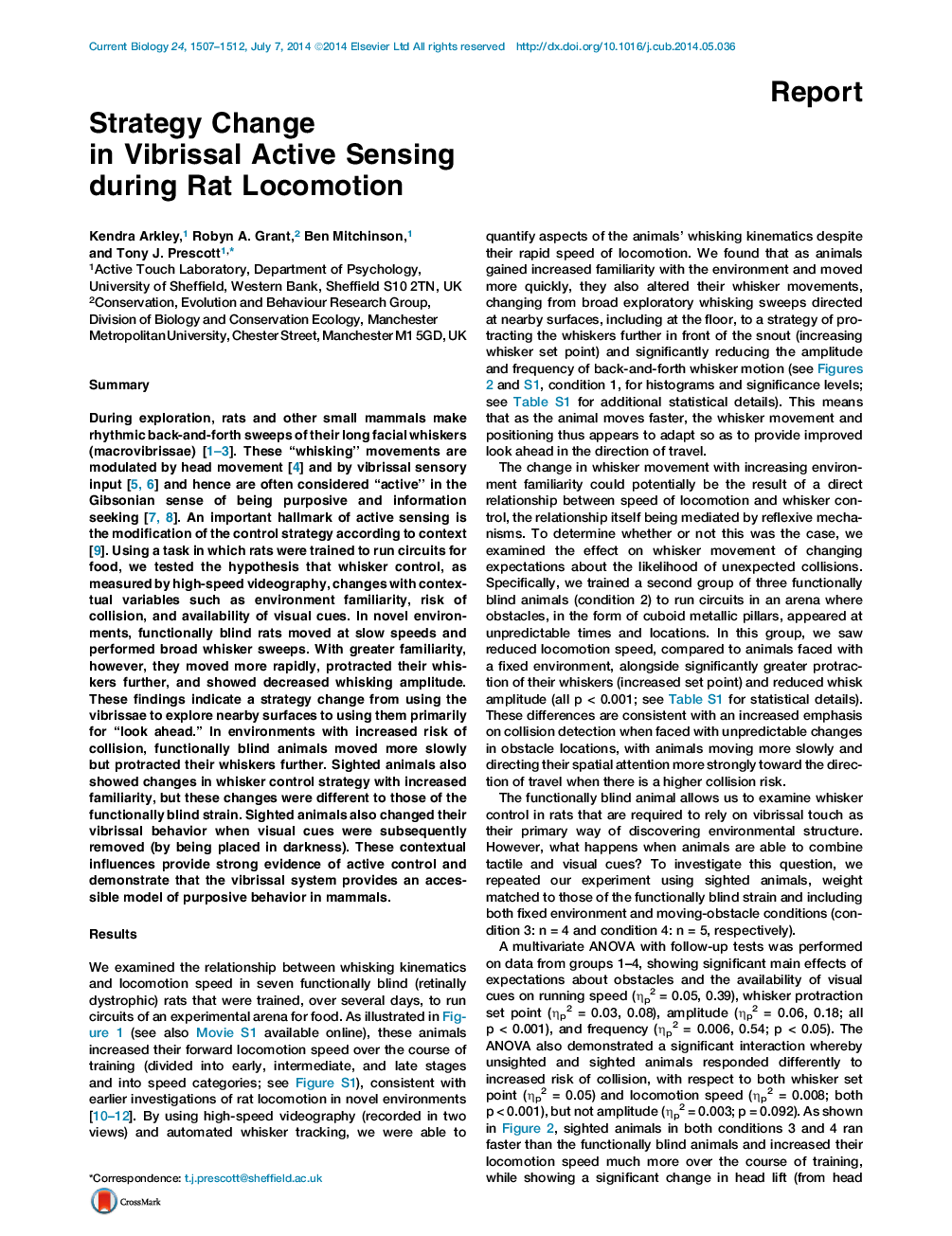| کد مقاله | کد نشریه | سال انتشار | مقاله انگلیسی | نسخه تمام متن |
|---|---|---|---|---|
| 2042722 | 1073261 | 2014 | 6 صفحه PDF | دانلود رایگان |

• Rats purposefully change their whisker position according to environment familiarity
• A “look-ahead” whisker strategy is adopted when running at fast locomotion speeds
• With risk of collision, unsighted rats reduce speed and increase whisker look-ahead
• Visual input alters the relationship between whisker control and locomotion speed
SummaryDuring exploration, rats and other small mammals make rhythmic back-and-forth sweeps of their long facial whiskers (macrovibrissae) [1, 2 and 3]. These “whisking” movements are modulated by head movement [4] and by vibrissal sensory input [5 and 6] and hence are often considered “active” in the Gibsonian sense of being purposive and information seeking [7 and 8]. An important hallmark of active sensing is the modification of the control strategy according to context [9]. Using a task in which rats were trained to run circuits for food, we tested the hypothesis that whisker control, as measured by high-speed videography, changes with contextual variables such as environment familiarity, risk of collision, and availability of visual cues. In novel environments, functionally blind rats moved at slow speeds and performed broad whisker sweeps. With greater familiarity, however, they moved more rapidly, protracted their whiskers further, and showed decreased whisking amplitude. These findings indicate a strategy change from using the vibrissae to explore nearby surfaces to using them primarily for “look ahead.” In environments with increased risk of collision, functionally blind animals moved more slowly but protracted their whiskers further. Sighted animals also showed changes in whisker control strategy with increased familiarity, but these changes were different to those of the functionally blind strain. Sighted animals also changed their vibrissal behavior when visual cues were subsequently removed (by being placed in darkness). These contextual influences provide strong evidence of active control and demonstrate that the vibrissal system provides an accessible model of purposive behavior in mammals.
Graphical AbstractFigure optionsDownload high-quality image (127 K)Download as PowerPoint slide
Journal: - Volume 24, Issue 13, 7 July 2014, Pages 1507–1512